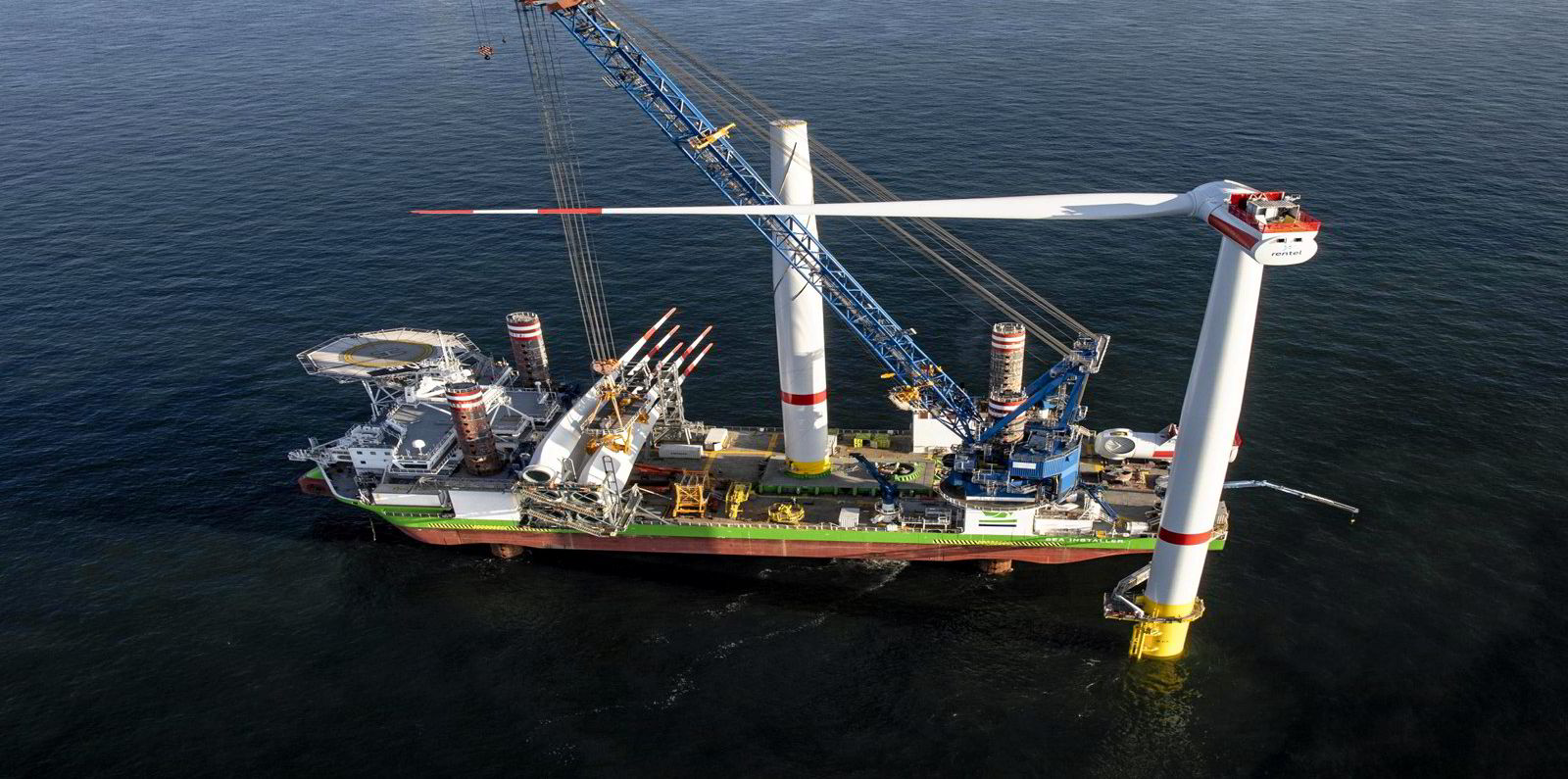As offshore renewable energy projects grow, the wind-turbine installation vessel sector may be heading for a crunch as demand for their services taps the available supply of the ships.
But the good news is there is still some time to order wind turbine installation vessel (WTIVs) to meet that growing need if shipowners are willing to take the risk that offshore wind project timelines will continue apace.
Martin Lysne, a senior analyst who tracks the sector at Rystad Energy, said the Oslo consultancy firm still sees a need for additional vessels, particularly if projects that are in the pipeline keep to schedule.

“When you look at 2025, that’s when it really starts to ramp up,” he said, noting that it is particularly in the WTIV sector where there is the potential for bottlenecks.
But he said that the risk of a crunch has been mitigated by WTIV newbuilding orders that have been placed earlier this year, particularly for the large vessels that are needed to handle towering turbines of 20 MW of more.
For shipowners, lobbing in an order for a WTIV has uncertainties as well, because the ships cost hundreds of millions of dollars.
“It might not be that you have the investment appetite there to fund all these vessels,” Lysne said.
Much has changed in energy markets since Russia invaded Ukraine in February, including increasing focus, particularly in Europe, on the role that offshore wind can play in energy security.
But market sources said this has not yet meaningfully changed the growing demand for offshore wind vessels.
“With the situation in Ukraine, there has been an increased focus on renewables and security, so there is definitely a lot of attention and a lot of focus,” Lysne said. “But in terms of supply and demand, we haven’t really seen any major changes to that as of yet.”
Graeme Riddell, an offshore renewables broker at Braemar, said the winds remain favourable for high-performance WTIVs.
Vessels are already booked for 2023 and 2024, at stronger rates than 2021, and are looking at a steady pipeline of new tenders and future projects, and next-generation WTIVs will deliver between 2024 and 2026 to tackle bigger turbines.
“Upgrades are also a theme of the market, indicating a long-term future for vessels with larger boom and deck upgrades,” he said. “This is to work the next generation of wind turbines.
“Future bottlenecks in the WTIV and foundation market look to be some way off, but they are possible if developers continue to sanction new capacity without greater consideration of what vessels they’ll use.”




